Artist based in Porto, Portugal
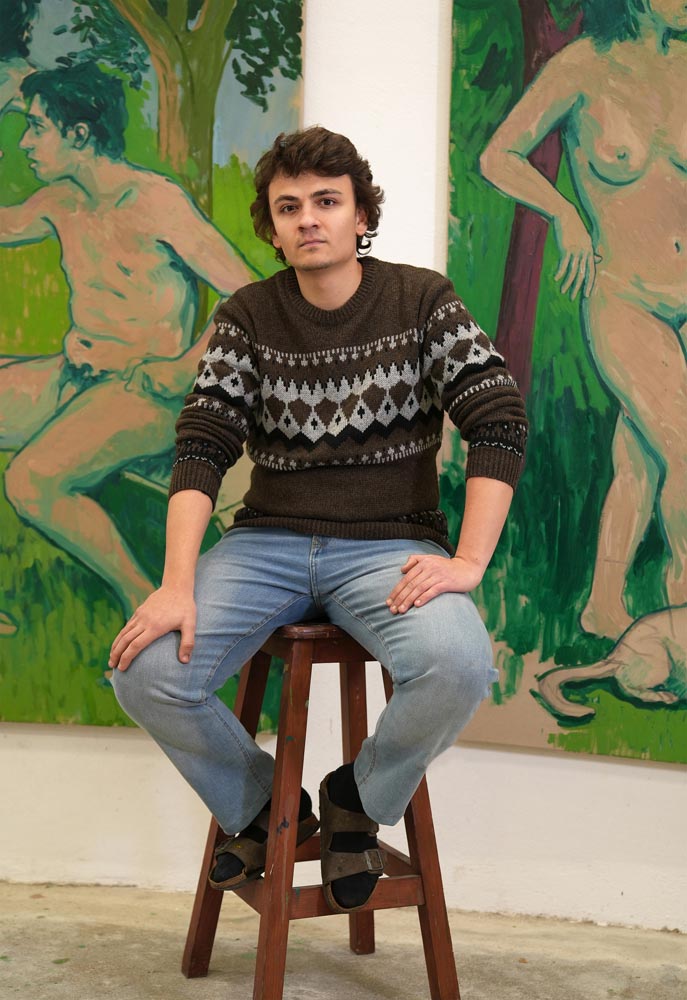
Afonso Rocha, Portrait of the artist. Photo by: Henrique Queirós
Tell us about yourself, what's your background?
I studied painting, having completed a BA (hons) at the Porto Faculty of Fine Arts, with a semester-long stay at the École Nationale Supérieure des Beaux-Arts des Paris. Prior to that, however, I did a three-year specializion in sculpture, where I learned to work with several different techniques that have notably contributed to enrich my current practice.
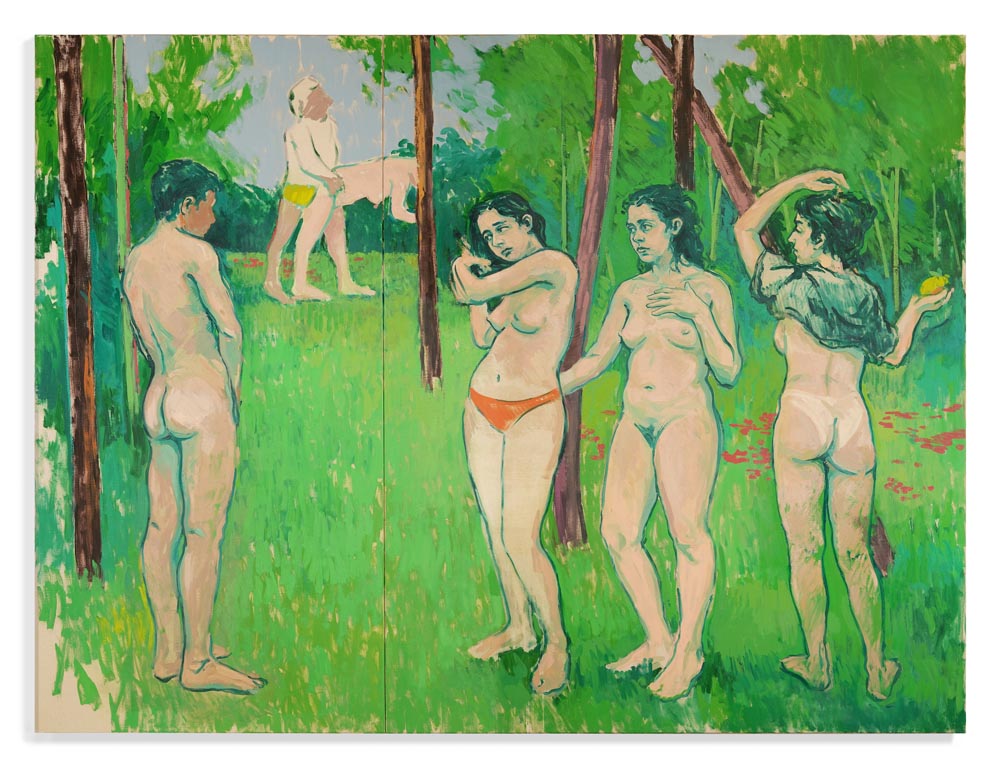
The Farewell, 2022, oil on canvas, 210x275 cm. Photography: Henrique Queirós
Since then, I gradually became aware of the fact that painting was, for me, a unique and timeless medium of dialogue between epochs, cultures and people. It became the main platform for my continuous research, even if I continue to work with other mediums and often partake in projects of other different areas, such as short films for example.
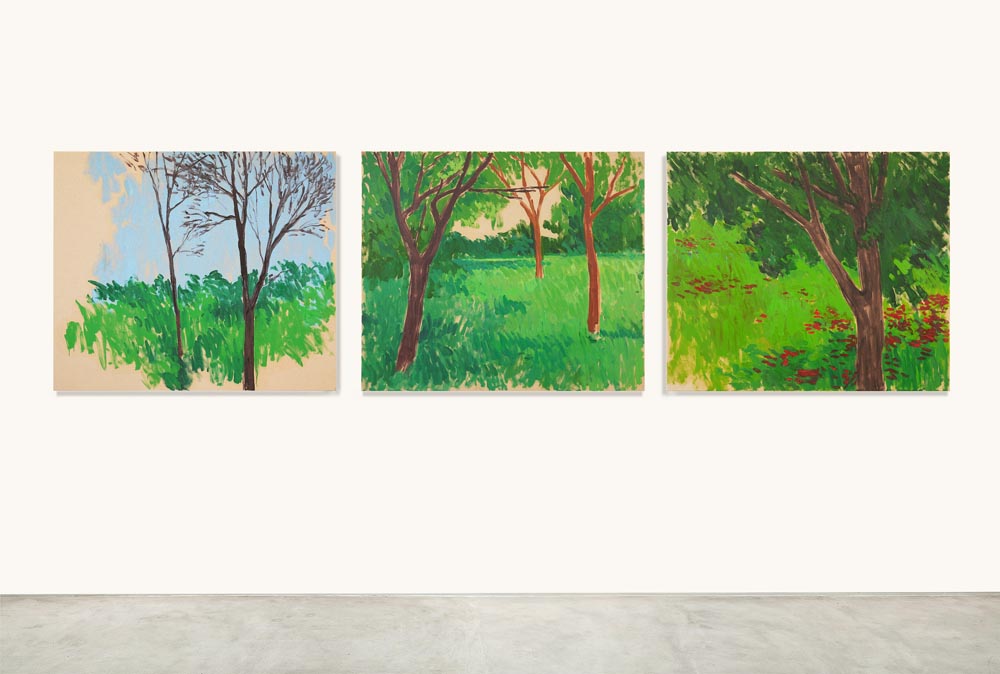
Landscapes Variation II, 2022, oil on canvas, 110X130 cm (each). Photography: Henrique Queirós
"I gradually became aware of the fact that painting was, for me, a unique and timeless medium of dialogue between epochs, cultures and people."
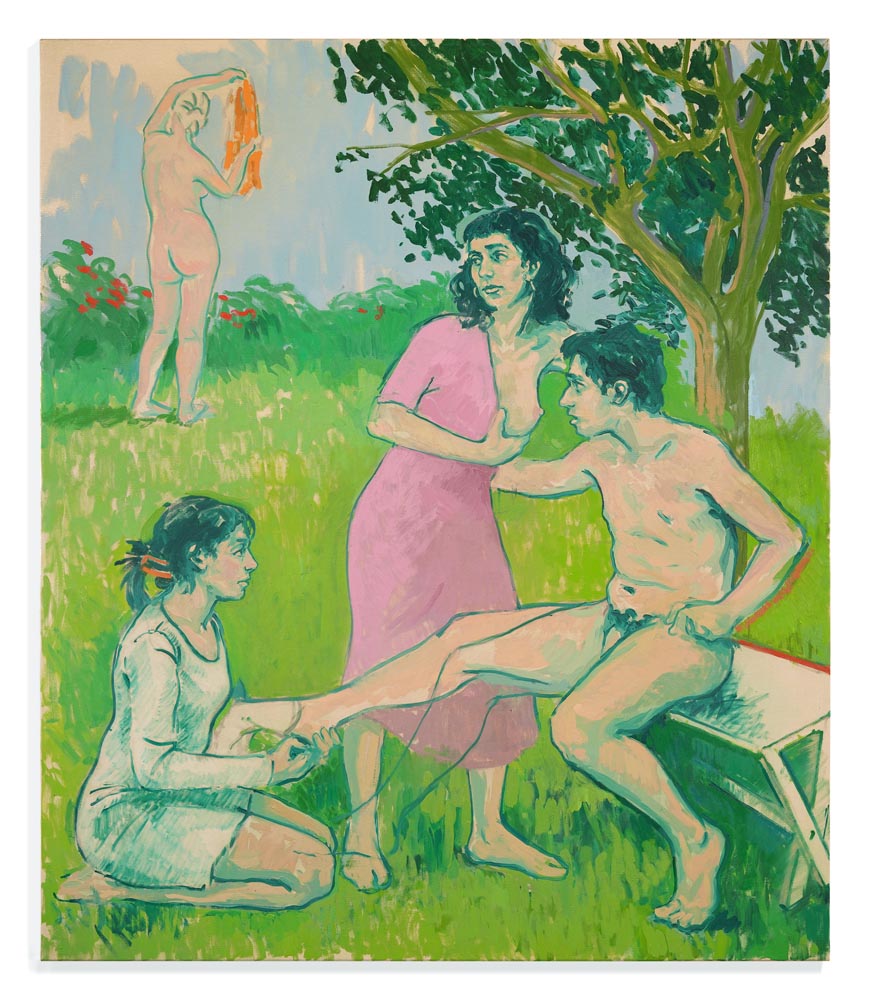
The Toilette, 2022, oil on canvas, 210x180 cm. Photography: Henrique Queirós
What are you currently working on and where did the inspiration for it come from?
I am currently working on a project called “The Garden” that I started in January of 2022 and expect it will keep me occupied for yet another year. This project is composed of more than fifty works, so far, including drawings, collages, photographs and paintings. From the smallest sketch to the largest canvas, all the pieces created within the project are simultaneously process and result, as they are all part of a common research. “The Garden” derives from the conjugation of historical subjects, connected mostly to Greek and Roman mythology, with diverse contemporary imagery. Figures and landscapes are used to explore this same premise, creating ambiguous dialogues while complementing each other.
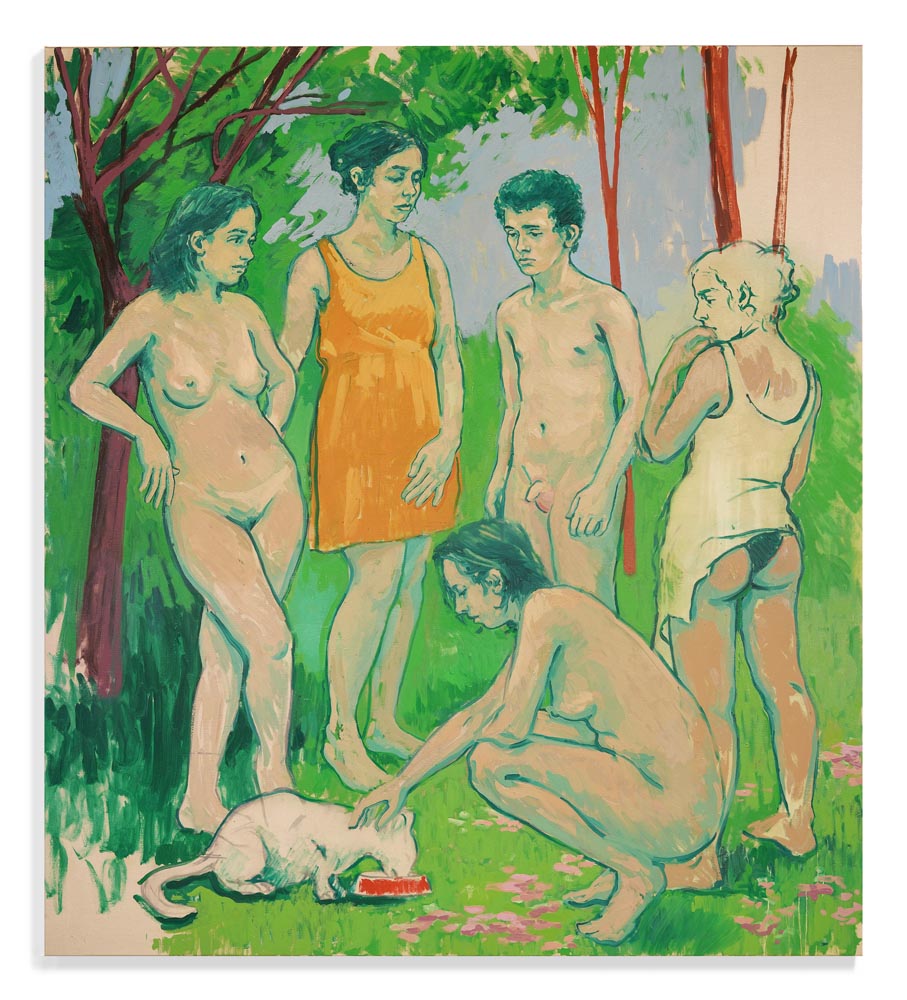
Around the Cat, 2022, oil on canvas, 210x190 cm. Photography: Henrique Queirós
Innovation does not only happen in the field of technology — it occurs everyday in a creative practice. What do you do for inspiration?
Even if the stuctural references of my work might come from a strong relationship with art history, I always like to be attentive to images, no matter where they come from. Sometimes even a lesser good film, a tabloid magazine or something I see on social media, can provide me with the most peculiar image or idea.
Other than that, I like to keep up with the work of contemporary artists, visit museums, go to the theatre, travel, among other things. Painting is a dialogue, and so it is good to be aware of what others did before you and what is being done right now.
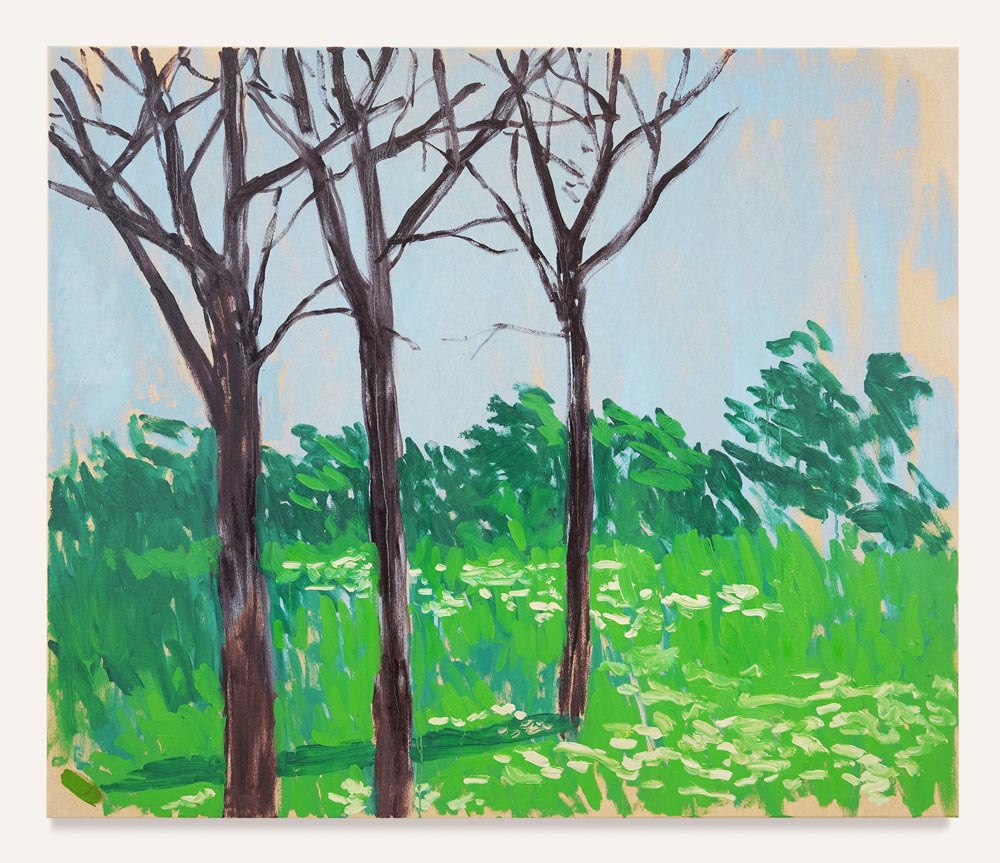
Landscape nº20, 2022, oil on canvas, 110X130 cm. Photography: Henrique Queirós
Describe your practice and process. Where do ideas start for you? In the studio or being in the world?
The ideas can come from anywhere. Either from studio research or from something I experience or see. Usually it’s a combination of both.
I use a number of mediums in my practice, such as paint, photography, drawing and printmaking. However, painting remains, so far, at the centre of my research. Through a range of subjects usually rooted in the history and tradition of art, my practice both elates and questions painting as a dialogue and a legacy.
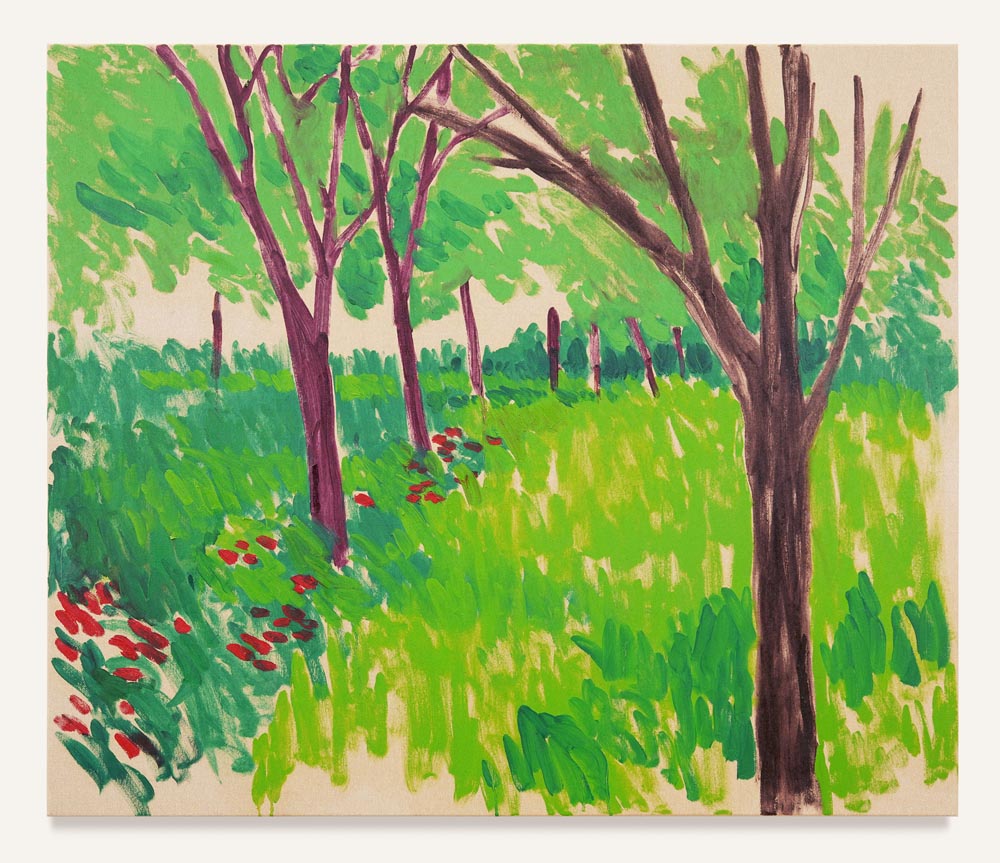
Landscape nº15, 2022, oil on canvas, 110X130 cm. Photography: Henrique Queirós
Personal matters are an important source for visual concepts, but no more so than those from literature, iconography, social media, erotic representations, amongst others. In a process similar to that of a collage, these different layers of information, references, ideas, and stories are consecutively placed on top of one another, creating new compositions with ironic and ambiguous meanings, instead of fixed narratives.
The large size canvases help to emphasize the contrast between the intimacy, or triviality, of the subjects and the grandeur of historical painting it dialogues with.
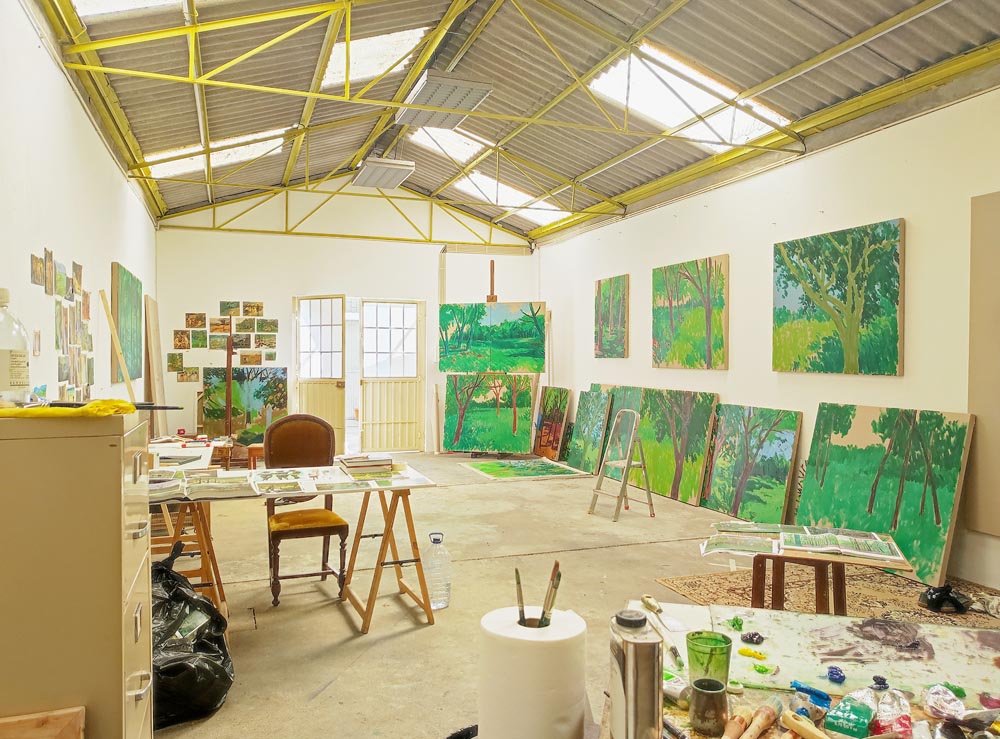
Studio view
How do you make your work, does it start with a sketch?
When I am starting a new project, I spend a few weeks just researching and collecting images, references and information, studying a specific subject if need be. Then I take all the fragments I have collected and lay them on a table, alongside with my art books and elements from my archive. Then, I start putting things together through the drawings, combining images, stories and ideas with different provenances, until I get a first sketch.
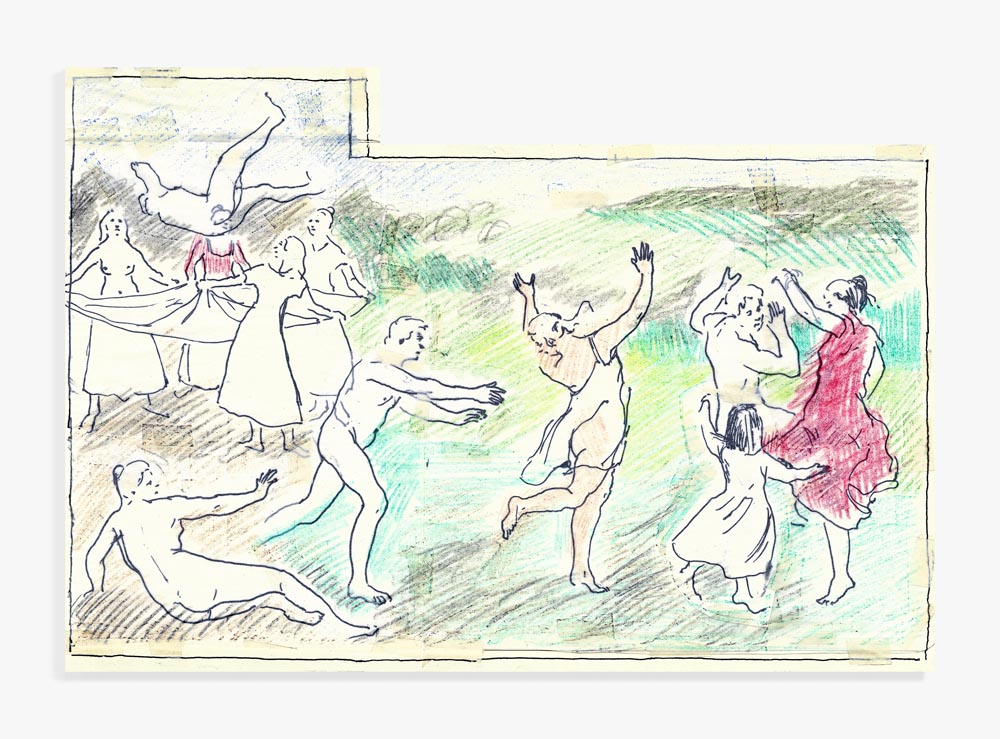
The Dance, 2022, black pen, coloured pencil and collage on paper, 30x50 cm. Photography: Henrique Queirós
The main principle is that, above everything else, an image is always an image, despite the where and when it comes from, and by drawing these pictures I can bring them all into the same time and space, while remaining aware of their own context and subtext.
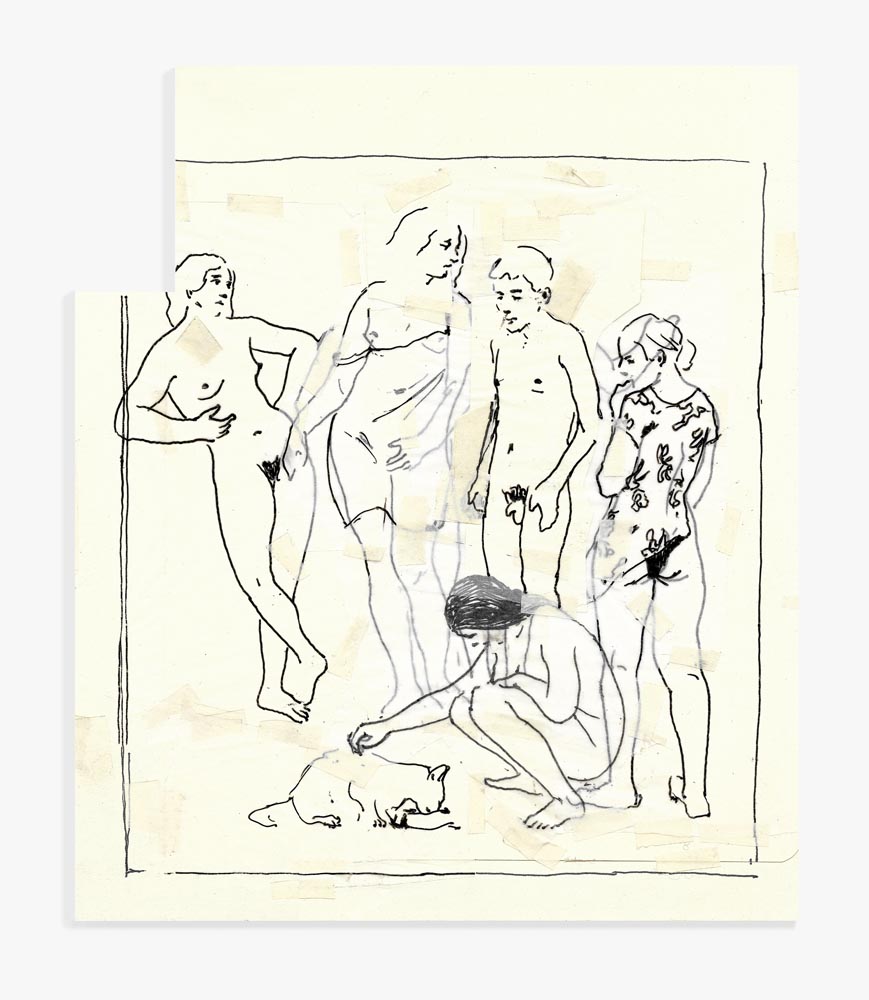
Around the Cat, 2022, black pen and collage on paper, 29x23 cm. Photography: Henrique Queirós
Later I will chose the models and the size of the canvases, but I will continue to explore the subjects through the different mediums, so that they can continue to influence each other. Because of that, the compositions are always changing until the end.
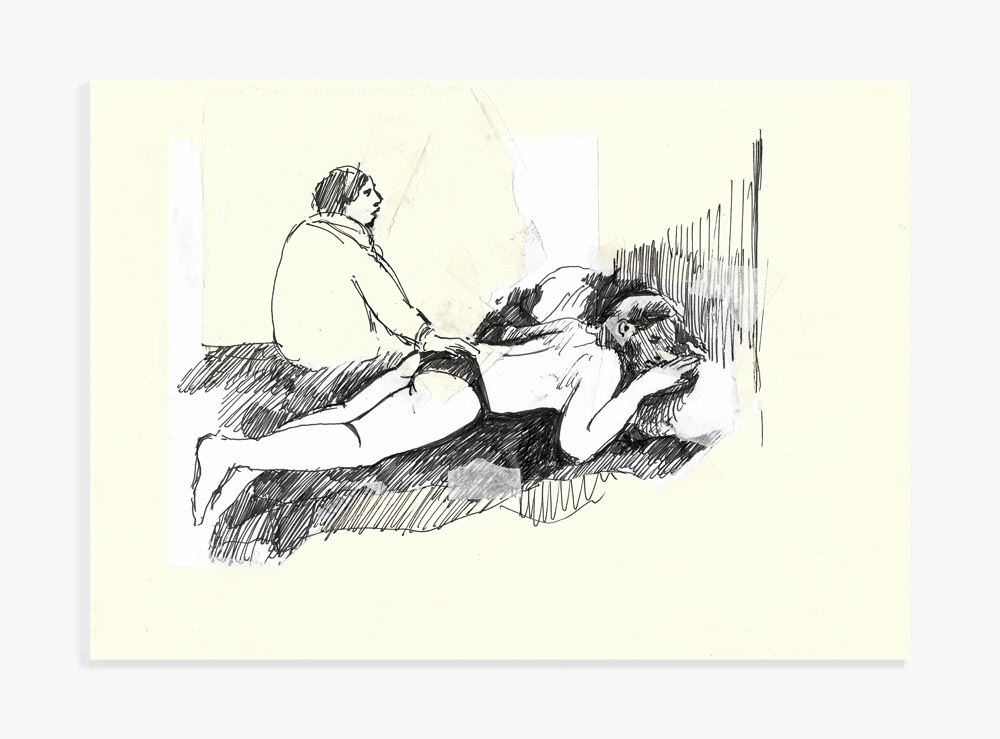
Lying Down, 2022, black pen and collage on paper, 21x29 cm. Photography: Henrique Queirós
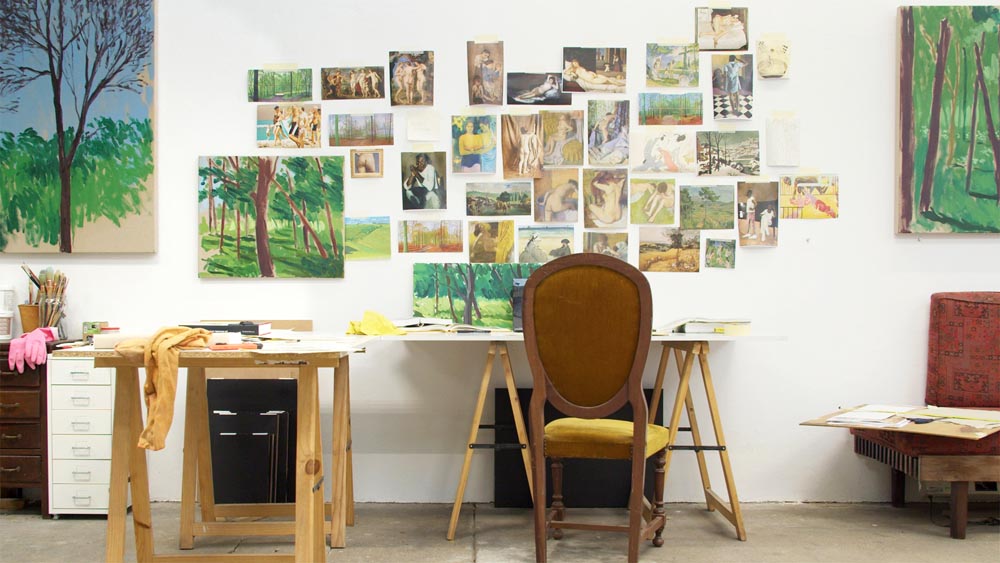
Detail of studio
Do you have your own studio ritual? What does that look like for you?
Unlike most painters, who usually like to paint throughout the night and have very flexible schedules, I am actually quite disciplined. I work almost everyday in the studio. I arrive in the morning, somewhere between 9 and 10 am, I have my breakfast and then start working. Later I’ll stop for lunch and that’s when I’ll take a break.
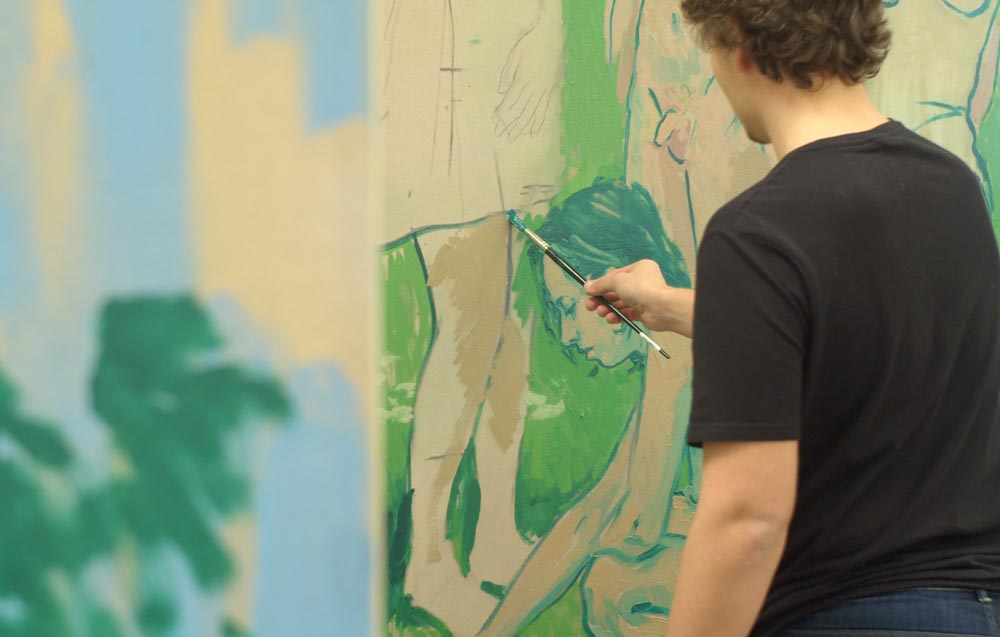
Working on "Around the Cat", 2022. Photography: Henrique Queirós
As I share a studio, there’s frequently someone else working and so I get to have quite interesting conversations. Then I go back to work. I do not like to paint later in the day, so usually I am always done before 8 pm. After that, I enjoy staying in the studio doing less demanding work, like stretching canvases, preparing next day’s work, or simply just receiving visits. I definitely spend more time at the studio than I do at home.
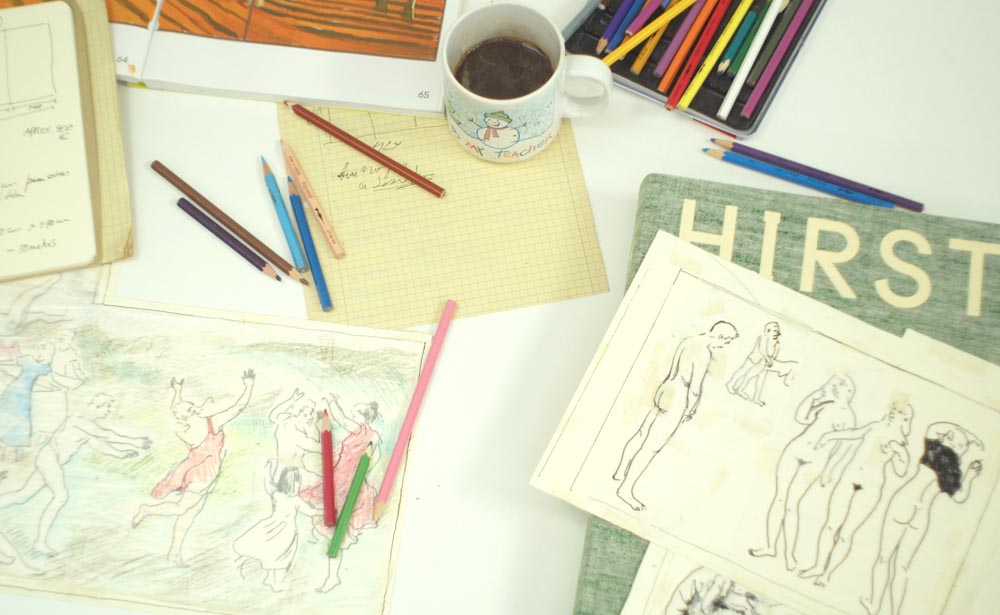
Research Process, 2022. Photography: Henrique Queirós
While I am painting, I listen mainly to classical music and opera. It might sound a bit anachronic, but it allows me to focus completely. The rest of the time I am at the studio, I like to waver between different kinds of music or simply silence.
Who are your biggest influences?
It is rather difficult to narrow down my influences to just a couple of names, as my work lives from the conjugation of so many different references and as they keep changing as I learn to appreciate different aspects in them. However, I reckon there are certain artists for whom I have a particular admiration. From old masters like Goya, Titian, Manet, Picasso, Gauguin or Freud, to contemporary painters such as Michael Armitage, Lynette Yiadom-Boakye, Paula Rego or David Hockney.
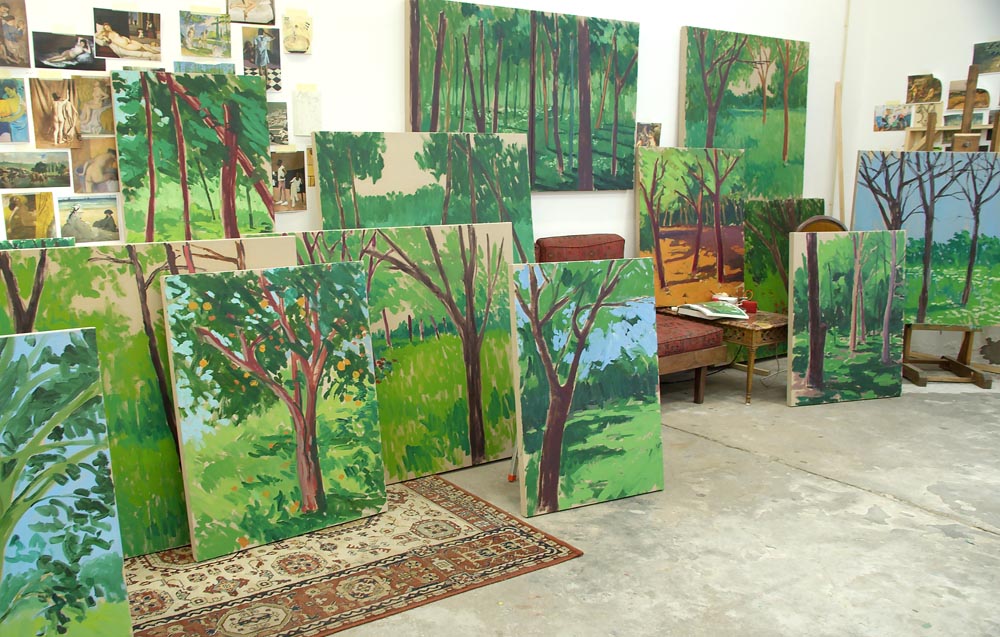
Studio view-landscape series, oil on canvas, 2022
Are there books or films that are an important source of inspiration?
I believe everything I do ends up influencing my practice. I cannot say there is a particular work that I have done after a specific book or film, but there is no doubt both things contribute to my practice in a more indirect way. I might come across a still from a film that truly interests me and that I end up turning into a drawing, that will later be included in some composition, or perhaps there is something I have read that will help to build a project’s conceptual outline. But is rarely a more direct approach than that.

Landscapes Variation IV, 2022, oil on canvas, 100X80 cm (each). Photography: Henrique Queirós
There are a few authors, nonetheless, who had a substancial influence on my practice’s development, such as David Vann, J.D. Salinger, Denis Johnson or Roberto Bolaño.
What’s the best piece of advice you’ve been given?
A few years back, someone very special told me that I should only paint if it was something I had to do, and couldn’t live without. If it was not, then there were easier and better things to do.
What is the best advice you would give to other artists?
There are two things that I believe to be important. The first one is to give as much time as possible to your work, to be disciplined and demanding, because otherwise you won’t be moving forward. The second one is to learn with others. From your peers, from the ones whose work you like, and those whose work you dislike, from others in different fields and from history, because we cannot know everything ourselfs.
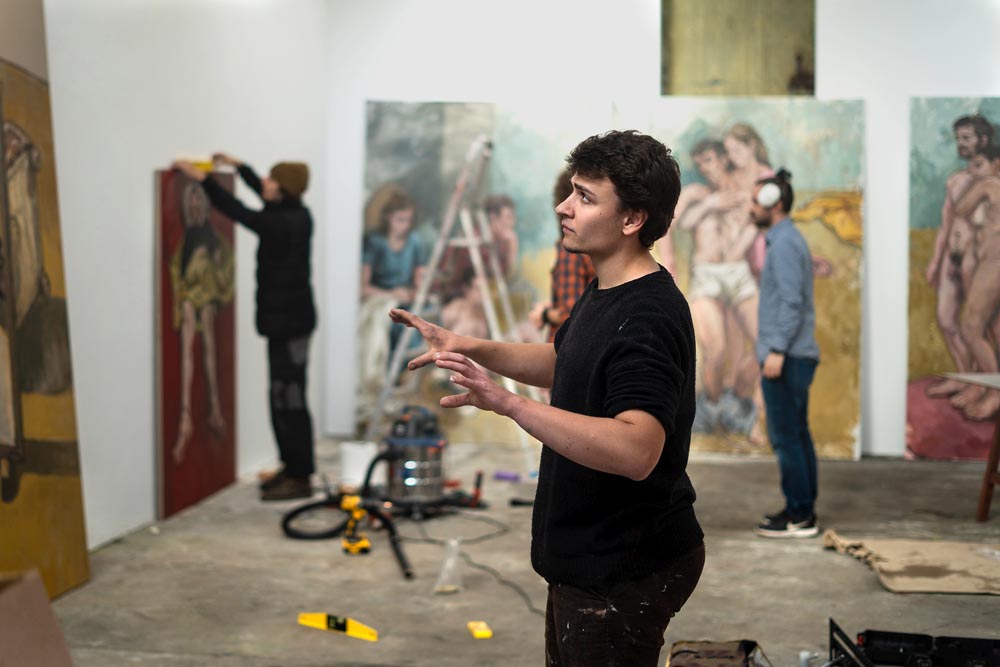
Portrait of the artist. Photo by: Ivo Martins
Stay up to date with Afonso Rocha
Instagram @afonso.m.rocha
afonsorochastudio.com